Kia Carnival Vs Chrysler Pacifica Vs Toyota Sienna Comparison

Welcome to the latest show here at AutoGuide: Family Hauler Feud.
It’s been a busy time here in 2021, the Year of the Minivan. Toyota debuted a wholly new generation of the Sienna, ditching the V6 and boldly going hybrid-only for its people mover. And speaking of bold, check out the bullet train-inspired looks. Meanwhile, Chrysler refreshed its segment-leading Pacifica, reintroducing AWD to its sliding-door model after over a decade. The all-paw drivetrain comes underneath a tweaked, SUV-inspired exterior design.
Then there’s the new kid on the block, the 2022 Kia Carnival. This travelling party on wheels leans into the crossover craze in a big way, so much so that Kia won’t even call it a minivan; it’s a Grand or Life Utility Vehicle, depending on which side of the 49th parallel you’re on. We liked it well enough in our earlier Kia Carnival review, but how does the latest competitor measure up to the establishment? Get the orange slices ready, this is going to be a tough game.
Styling
Carnival: Managing editor Kshitij and I quickly agree on at least one thing here: the Carnival does look pretty darned cool. The concave grille looks like a disco ball in reverse, yet framed within the Carnival’s sneering Tiger Face, it works. The faux skid plate on the nose, the blacked-out A-pillar, and the chunky wheel arches all ensure the Carnival’s crossover cosplay is pretty effective. Strangers didn’t give the other two rides a second thought, but more than a few people asked about the Carnival. Maybe it’s because that new badge.
Get a Quote on a New Kia Carnival or Chrysler PacificaThe textured chrome C-pillars get the nod of approval from us, providing a visual (and tactile) point of interest where vans need it most. They makes the visible door sliders all the more strange, though: why go through all the trouble of making the Carnival not look like a minivan, and keep the most obvious tell clearly on display?
Pacifica: With half the minivan market fielding new challengers this year, Chrysler couldn’t just rest on its folding-seat laurels. The tweaks to the Pacifica’s styling clean up the look, though to my eyes, they also make the people mover less distinctive. Like the others, there’s a lot of “SUV-inspired” verbiage in the official rationale.
The Pacifica is still handsome though, especially in this top Pinnacle trim. High points include the attractive wheel design, and the smooth curvature of the rear glass aligning with the taillights. Speaking of the latter, while Chrysler has adopted the all-too-familiar full-width treatment, it’s the one styling change we prefer over the pre-facelift model.
Sienna: Even though the Sienna was designed and built for the North American market, it takes inspiration from Japan’s bullet trains. It’s a bold move, one that makes the Toyota the most divisive design of the trio. The rear three-quarter is likely its best angle, with the Supra-inspired taillights and rear shoulder line working way better than you’d ever expect on such a shape. The bluff front, with its rounded-beak “grille,” is less convincing. Smallish 18-inch wheels look lost under the visual weight of the bodywork, but opting for 20s means speccing the XSE trim, with a gaping maw of a lower bumper.
Of the three, the Sienna is the most recognizable as a minivan. It uses less of the visual chicanery than either the Pacifica or Carnival. In that sense, we appreciate it—even if it is a little weird.
Bottom Line: Maybe the newness of the shape, name, and badge will fade over time. But for now, the Carnival scores a decisive first-round victory.
Interior and Cargo Space
Carnival: Kia’s interior game has been strong as of late—see the K5 and Sorento—and the Carnival is no different. The dashboard has a clean design, with that same chrome pattern on the exterior tastefully applied here. We’re less enthused with all the piano black, especially as it wraps the door handles. The stuff is impossible to keep clean as is, and in a minivan even more so.
Kia has also dropped physical buttons for capacitive ones for much of the center console. It’s not ideal, but at least there’s a decent amount of space between the keys. At least Kia stuck with a regular shifter, too.
In the space race, the Kia comes up behind the others for front-row occupants. It lacks the cavernous under-console storage, and its door pockets are average. At 39.7 inches (1,009 mm), headroom tops the Pacifica and Sienna. Legroom is essentially identical to the Pacifica at 41.1 inches (1,044 mm)—what’s a millimeter between friends?
Middle-row folks get the best seats in the house, thanks to this top-trim’s very cool VIP-style thrones. At the touch of a button the seats can recline, even raising a footrest. Since they can slide almost three feet, even adults can enjoy a good stretch back here. It takes a good shove to slide them though.
SEE ALSO: Hyundai Palisade vs Kia Telluride ComparisonUnfortunately, speccing the awesome seats makes it decidedly less awesome getting to the way-back. The only way there is between the seats; eight-passenger models have a traditional quick-release for easier access from the door. Once in the back, riders will find 36.5 and 35.9 inches of head- and legroom; both less than the other vans. The smallish window doesn’t help, but at least there are wide armrests.
Kia claws back some ground with the best storage figures. There’s a full 40.2 cubic feet (1,139 L) of storage behind the third row. In eight-seat spec, the Carnival offers up to 145.1 cubes (4,110 L), more than any other minivan. Try fitting that much stuff in a Telluride. The cargo hold is also impressively square.
Pacifica: The Chrysler is the undisputed luxury model of the group. This new-for-2021 Pinnacle trim comes with soft, quilted leather seats that look as good as they feel. Kshitij points out even his wife specifically noted the “luxurious feel and seat comfort.” Contrast stitching livens up the interior further, and most everything you can touch is soft. I say most, as there are still a few harder pieces of plastic along the doors. The high-gloss wood feels decidedly old-school, too. We were split on the analog dials: Kshitij didn’t love them, but I remain a big fan of Chrysler’s art deco fonts and blue lighting.
The thin strip of metal on the steering wheel is a strange choice. It’s almost always cool to the touch, even when the (very effective) steering wheel heater is active.
In a surprise twist, headroom is actually least in the front row, at 38.4 inches (975 mm). Second-row passengers, with that enormous glass roof above and comfy suede-covered lumbar pillows below, enjoy 39.6 inches of the stuff (1,006 mm). Those in the third row still enjoy 38.7 inches (984 mm), more than in either competitor. Legroom is 41.1 inches (1,045 mm), 39.0 inches (992 mm), and 36.5 inches (929 mm), respectively.
Picking the Pinnacle means bypassing Chrysler’s segment-leading second-row Stow N’ Go seating. It’s too bad, but you still get the underfloor storage space for hiding knick knacks. The third row still does fold flat though—and it’s powered too, unique here. With every seat in the house spoken for, storage space is 32.3 cubic feet (914 L). Even if we could fold the middle row flat, the Pacifica’s maximum possible 140.5 cubes (3,978 L) still can’t quite carry the sheer amount of stuff as the Carnival.
Sienna: The Sienna feels tailor-made for family hauling. The dash design might be simpler than the other two buses, but the built-in shelf running its length is incredibly practical. Look below the floating plank and you’ll find a large open space to throw a purse or camera bag. The doors hold an absolutely massive amount of drinks, or the various flotsam that any family will accumulate.
Headroom is a perfectly functional 38.1 inches (969 mm) up front, expanding to 39.3 inches (998 mm) in the second row. It feels like less however, since the oddly-shaped ceiling peeks into the view ahead. Third-row headroom is an acceptable 37.4 inches (949 mm). Legroom, especially in the way-back, is where the Toyota earns kudos. We’re talking 38.7 inches (982 mm) of the stuff back there, enough that adults won’t even mind a longer trip. The front row finds the most space at 40.3 inches (1,024 mm), but the middle row isn’t far behind, at an even 40.0 inches (1,015 mm).
The Toyota is the one we’d least like to get stuck hauling people’s stuff, though. All-up, Toyota quotes 33.5 cubic feet (949 L) of storage in the trunk—so far, so decent. The number with the third row manually folded flat? 75.2 cubes (2,129 L). Not bad. Both the Sienna and Carnival use Velcro’d pull-straps to raise the seats back up, something we’d be concerned about over the long term.
But you can only awkwardly bunch the second-row up against the first—and you can’t remove them either—so the absolute max storage capacity is 101.0 cubic feet (2,860 L). If it were any other segment that’d be a number worth celebrating, but it’s two-thirds the Carnival’s space. Ouch.
Bottom Line: We’re torn here. The Pacifica has the best interior for adults. The Carnival has the most cargo space (but the tightest rear seats). The Toyota tops the practicality table, but feels a little pedestrian.
We finally agree that the Pacifica snatches this one. It can’t match those cool VIP seats, but don’t discount its strong throw pillow game. It’s also easier to get to the rear seats in the Pacifica, and they’re more comfortable once you’re back there.
Tech and Features
Carnival: Our SX Prestige tester (simply SX in Canada) comes with a sharp twin-screen setup plonked atop the dash. Both measure 12.3 inches across, and feature crisp graphics. The main touchscreen has the two most important features of a modern UX down: quick responses, and an intuitive layout. Apple CarPlay and Android Auto are standard, but not wireless—though there is a wireless charging pad.
The digital instrument panel also brings with it some important features beyond simply looking pretty. For starters, Kia’s excellent Blind View Monitor is present, which swaps out the left or right dial for a camera feed whenever the corresponding turn signal is active. The driver can also check all of the Carnival’s important vitals through the central menu. Perhaps my favorite feature, though, is a relatively mundane one: a pop-up notice every time the headlight or wiper setting changes, spelled out.
Kia includes a high-res, 360-degree camera in the top trim, making it easy to park the fridge-shaped giant in even the tightest underground lot. Also included are Passenger Talk and Camera, which respectively amplify the driver’s voice and use a ceiling-mounted camera to easily check in on the kiddos in the back. A customizable button the steering wheel allows you to map this feature for near-instant access. Also included is a quiet mode, which cuts power to all but the front speakers on the Bose system, as well as limits max volume.
What the Carnival lacks is any particularly groundbreaking features. Passenger Talk and Camera are very useful, but we’re frankly surprised the new kid on the block doesn’t offer kick-activated sliding doors, as an example. What it does, it does well, but we wish Kia would have been as adventurous with its feature list as it was with the design. Or those VIP seats. Kia, do you sell them separately?
Pacifica: The Pacifica was the first Stellantis product to usher in Uconnect 5. It’s a pretty sweet system: it’s faster than before, with ultra-crisp graphics that are iPad levels of sharp. Apple CarPlay and Android Auto are standard, and both work wirelessly. In addition, Uconnect 5 allows for six user profiles, saving things like seat, mirror, and climate settings, as well as audio preferences. For a family vehicle, this is clutch.
I tend to use CarPlay for navigation, but the native system in the Pacifica is good enough that I didn’t bother. It’s clear enough to read at a glance, provides accurate instructions, and does everything quickly. A 4G WiFi hotspot is available too, and 12 USB ports to ensure the whole crew’s devices are fully juiced.
The Pinnacle comes with what Chrysler calls FamCam. It’s a ceiling-mounted camera similar to the Kia’s, but offers a wider view, allowing the driver to zoom in on a particular seat. The 19-speaker Harman Kardon sound system is also far and away the best one here. You won’t always be shuttling the family around, right?
Finally, the Chrysler has a built-in vacuum. Advantage, Pacifica.
Sienna: The Sienna doesn’t get off to a strong start thanks to the old Entune infotainment system. The relative smallness of the screen (9.0 inches) is fine; Toyota doesn’t offer the Platinum and its larger 12.3-inch unit in Canada. But the dated graphics and slow interface are the real issues here. Both Kshitij and I agree it’s far easier to just immediately go to (wired) Apple CarPlay or Android Auto and never look back.
The Toyota’s bag of tricks include kick-activated sliding doors, Driver Easy Speak, a large single-screen entertainment setup for the second row, and seven total USB ports. The kick-activated doors are its main party piece, proving to be hugely beneficial when hands are full. Easy Speak works much like the similar system in the Kia: it’s bizarrely natural.
While the Sienna can’t offer the throw pillows or fancy reclining seats of the others, its seats are the easiest to slide around, which in turn makes it the best one to quickly access the way-back.
Unfortunately, due to a supplier issue, Toyota isn’t currently able to offer the planned built-in vacuum and second-row freezer in the Sienna. That’s too bad, because the amount of storage cubbies in here is a daunting amount to clean out by hand.
Bottom Line: It’s another win for the Pacifica in this category. Power everything makes it the most accessible. Meanwhile, the Uconnect 5 system is, as Kshitij points out, “the best infotainment of the three by far.” Splitting the entertainment screens is a huge boon too, something the Kia admittedly does as well. The Carnival also allows folks to bring in their own headphones and devices for the second-row infotainment, which is a welcome move. It runs the Pacifica close, but in the end, this is Chrysler’s category.
Powertrain, Driving Feel, and Fuel Economy
Carnival: Every 2022 Carnival comes with the same drivetrain: a 290-horsepower, 3.5-liter V6, eight-speed automatic transmission, and front-wheel drive. Yep, despite all the SUV postering of the styling, the Carnival lacks the AWD of the other two vehicles.
Allow me to quote myself from the earlier Carnival solo review: “The overriding quality is smoothness: the big LUV smothers bumps and ruts in the road, transmitting only the faintest hint to the cabin.” Kia has put in the work to keep more wind- and road noise out than the others. The Carnival will lean into corners—hey, that’s like an SUV—but it’s not any more noticeable inside the cabin than it is in the Pacifica or Sienna.
The steering is pleasantly light, but not overly so. Both pedals have a consistent travel to them. It’s an incredibly easy car to get into and get comfortable quickly, despite its enormous proportions. The Carnival is also easy to see out of, though its third-row windows are a little small.
Fuel economy is on par with other V6, front-drive vans, at 19 mpg city, 26 mpg highway, and 22 mpg combined. Canadian numbers are 12.0, 8.9, and 10.6 L/100 km, respectively. During our time together, the Carnival did only slightly worse, at 21 mpg (11.2 L/100 km).
Pacifica: AWD-equipped Pacificas like this tester come with the tried-and-true 3.6-liter Pentastar V6. At 287 hp and 262 lb-ft of torque, it essentially matches the Carnival’s outputs. The Chrysler adds another cog to its auto ‘box, for a total of nine.
Chrysler has refined this particular pairing to handle the daily grind with ease. The V6 is responsive, getting up to highway speeds without fuss. Kshitij says he experienced some gear shuffle on a steady throttle, but I never noticed any during my miles with the Pacifica. The steering is smooth and consistent, though the brake pedal is decidedly squishy. Mostly, it feels like a (very) large car. Sight lines are great thanks to the large windows all along the side.
On the road, the Pacifica is a consummate cruiser. Even with the largest wheels of the group, it never get crashy, gliding along with poise. There is a noticeable amount of suspension noise, however. On the highway, it’s resolutely stable.
Unsurprisingly (because AWD), the Pacifica was the thirstiest of our group, if only just. The EPA rates it at an even 20 mpg combined, split between 17 mpg city and 25 mpg highway. Canadian figures are 12.0 L/100 km combined, 14.1 L/100 km city, and 9.4 L/100 km highway. Our week was bang-on with that. Skipping the AWD bumps the numbers to 19 mpg city, 28 highway, and 22 mpg combined (12.4, 8.4, and 10.6 L/100 km, respectively).
Sienna: As the only hybrid of the group, the Toyota features a smaller, 2.5-liter four-cylinder engine. A total of three electric motors augment the ICE, resulting in a combined output of 245 hp (Toyota doesn’t quote a torque figure). Like every other hybrid the brand offers, the Sienna uses an electronically-controlled continuously variable transmission (CVT) for not-shifting duties.
The result is fuel economy roughly 50 percent better than the V6-powered competition. EPA ratings for the Sienna AWD are 35 mpg city, 36 mpg highway, with a combined rating of 35 mpg. Ditching the AWD brings all scores up to 36 mpg. Our hard-working week with the Sienna saw 30.5 mpg (7.7 L/100 km); not great, but a big improvement over the others.
Saving at the pump does come with a slight penalty behind the wheel. The Sienna’s electric motors keep it from feeling sluggish in the city, but as Kshitij points out, the four-cylinder “feels a bit strained under hard acceleration.” None of these have what you’d call tuneful engines, but the Toyota’s four-pot drone is the least enjoyable. Once it does get up to speed on the highway, the Sienna is more prone to buffeting than the others.
Like many modern Toyotas, the Sienna is softly sprung. This gives it what Kshitij says is an “absorbent ride, especially in the city.” Since it shares its platform with everything from the Corolla through to the Highlander, there’s a calming familiarity to how the Sienna moves down the road.
Bottom Line: When it comes to fuel efficiency, nothing can match the Sienna’s standard hybrid system. Chrysler offers a plug-in hybrid Pacifica that can do better still, but you’ll be sacrificing AWD for it. You’ll be sacrificing AWD if you pick the Carnival, too. If you rarely experience snow, and don’t plan on taking it on anything worse than gravel roads, then that shouldn’t be a problem.
But we’re here in Canada, where it snowed at the end of April. The appeal of the Toyota’s massive fuel savings and AWD is impossible to ignore. It’ll pay for the next family trip in no time.
Safety
Carnival: Neither the NHTSA nor IIHS have rated the 2022 Kia Carnival yet. The former gave the outgoing Sedona a 5-star rating however, and we expect the Carnival to at least match that. The Sedona missed out on an IIHS Top Safety Pick because of the passenger-side small overlap test; we’ll update this section once the Carnival has completed testing.
On the driver assist front, the Carnival arrives with standard forward collision avoidance, lane-keep assist, lane follow assist, auto high beams, and a radar-based rear occupant reminder. Rear cross-traffic collision avoidance is standard in the US, but doesn’t show up on Canadian models until the EX trim. Higher trims expand this to the nose of the Carny as well, in addition to a 360-degree camera and Kia’s very handy blind-spot view monitor, which replaces a dial with a live camera feed of your blind spot every time a turn signal is activated.
Pacifica: The Pacifica features its own long list of standard driving assists, including automated emergency braking, adaptive cruise control, full LED exterior lighting, lane departure and keep assists, blind-spot monitoring, rear cross-path detection, and rear parking assist. Higher trims like this Pinnacle tester include a high-definition surround-view camera, a frontal parking sensor, and a semi-automated parking assist.
The NHTSA awarded the Pacifica a 5-star rating. It does not earn an IIHS Top Safety Pick title, however.
In that strange Stellantis tradition, both the smart and regular cruise control are available on the steering wheel. The former works well, leaving reasonable gaps and accelerating smoothly. The parking assist easily handled parallel parking in the city.
Sienna: The IIHS awarded the redesigned Toyota Sienna its highest award this year, the Top Safety Pick + designation. On the flip side, the NHTSA gave it four stars for frontal crashes, and five stars for side impacts.
Toyota Safety Sense 2.0 is standard across the Sienna range, Toyota’s umbrella name for features such as pre-collision braking (with pedestrian and cyclist detection), lane departure alert, lane-keep assist, auto high beams, and road sign recognition. The Sienna also adds standard rear cross-traffic alert, with integrated braking on higher trims. Dynamic cruise control is part of TSS 2.0 as well. We’ve found earlier systems to be too timid on the highway, but the Sienna is better now, accelerating more naturally and ping-ponging less between the lines.
Bottom Line: It’s pretty much a wash here, as all three vans come well-equipped to protect your loved ones should the worst happen. Standard driver assists are also key in this segment, and all three manufacturers know it.
Pricing
Carnival: Stepping into a Carnival LX will run buyers $33,275 ($36,345 CAD). That’s a very reasonable sum of money for something this big and practical. That price includes a non-VIP seven-seat layout, though every other trim outside the top one bumps that to eight. Eight is standard on the LX in Canada, however. Other standard equipment includes cloth seating, removable second-row seats, front and rear air conditioning, seven USB ports, and an 8.0-inch touchscreen.
Our tester is the top-level SX Prestige (simply SX in Canada). With an as-tested sticker of $47,770 ($50,395), it comes with everything Kia offers, including that fancy second row, tri-zone climate control, a larger 12.3-inch touchscreen, leather seating, 12-speaker Bose sound system, rear-seat entertainment (dealer accessory in Canada), digital instrument panel, heat and ventilation for the front two rows, dual power sunroofs, smart power tailgate, full power up- and down- windows, and more.
Pacifica: There’s an asterisk to the Pacifica’s $36,990 ($47,760 CAD) starting price: for much less, you can opt for the de-contented Voyager (called Grand Caravan in Canada). It loses out on a lot of the standard safety features though, and even the facelift. The basic Pacifica still includes features like three-zone climate control, LED lighting, and those clever Stow N’ Go seats.
Our loaded Pinnacle tester carries the biggest sticker of the test, a wallet-tightening $56,260 ($68,685 CAD). Admittedly, you could get the Limited and still find most of the family-friendly features on offer here. You’re just missing out on the beautiful quilted leather, lumbar pillows, and the HK sound system (it’s optional on Limited).
Sienna: The Toyota splits the difference between the others, starting at $35,635 ($41,850 CAD) for a front-drive model. You’ll get fabric seats for eight here, with TSS 2.0, full LED exterior lighting, three-zone auto climate control, three-zone climate control, tilt/telescopic steering wheel, power up and down windows, and seven USB ports.
The Platinum model isn’t available in Canada (for now). Thus this Limited was the top option, with an as-tested price of $51,190 ($60,050 CAD). It misses out on the HUD and 360-degree camera, but still features standard leather seating, wireless charging, hands-free power tailgate and sliding doors, four-zone climate control, power sunroof, and those long-slide second-row seats.
Bottom Line: The Carnival undercuts the competition across the board, both in base form and as-tested. That’s one area we’re glad it continues to mimic the now-dead Sedona.
Verdict: Kia Carnival vs Chrysler Pacifica vs Toyota Sienna Comparison
This minivan throwdown was so much more difficult to call than we originally expected. All three of these top-shelf people movers have their own strengths and weaknesses. It might be a smaller field these days, but there’s an impressive amount of diversity in the segment.
The latest addition is, sadly, the first to fall. The Carnival excels in a great many things, style and value being amongst them. We can’t ignore the lure of those VIP-style second-row seats either—the most comfortable middle row in the business. The Carnival sacrifices the practicality inherent in its shape to offer them though, and its lack of either AWD or a hybrid powertrain is a big blind spot. If you don’t need either of those, and your kids are older, the Carnival makes a solid, value-oriented pitch.
Scoring silver is Toyota’s hybridized Sienna. The minivan lacks the wow factor of either competitor, but scores very highly on the practicality and efficiency scales. Storage nooks abound in the Sienna, while parents will appreciate the dashboard shelf and large storage space under the center console. We can live with the small hit to full-throttle acceleration when it means saving this much gas. For younger families, the Sienna is the sweet spot.
It’s the 2021 Chrysler Pacifica that we want most though. True, it’s the priciest—and by a large margin in Canada. The Chrysler feels worth it, with a mature ride, luxury digs, and a class-leading infotainment setup. The Pinnacle may sacrifice the second-row Stow ‘N Go seats found on the rest of the range, but it still has the powered third-row advantage. Considering all that, plus its classy looks and suite of safety assists, our newly-christened Family Vehicle of the Year wins this match-up.
Become an AutoGuide insider. Get the latest from the automotive world first by subscribing to our newsletter here.

Kyle began his automotive obsession before he even started school, courtesy of a remote control Porsche and various LEGO sets. He later studied advertising and graphic design at Humber College, which led him to writing about cars (both real and digital). He is now a proud member of the Automobile Journalists Association of Canada (AJAC), where he was the Journalist of the Year runner-up for 2021.
More by Kyle Patrick
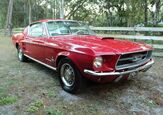


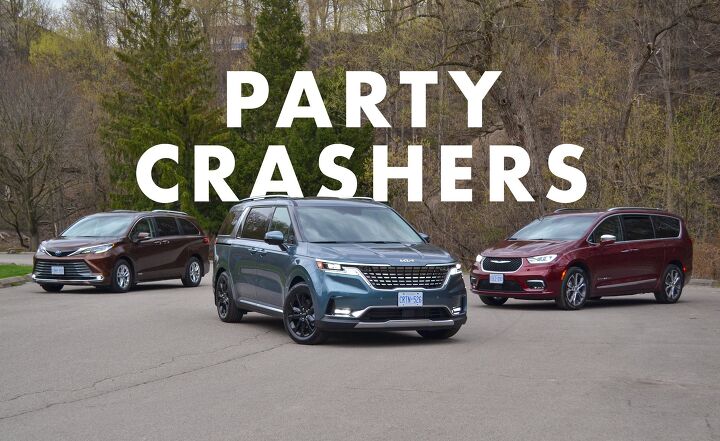
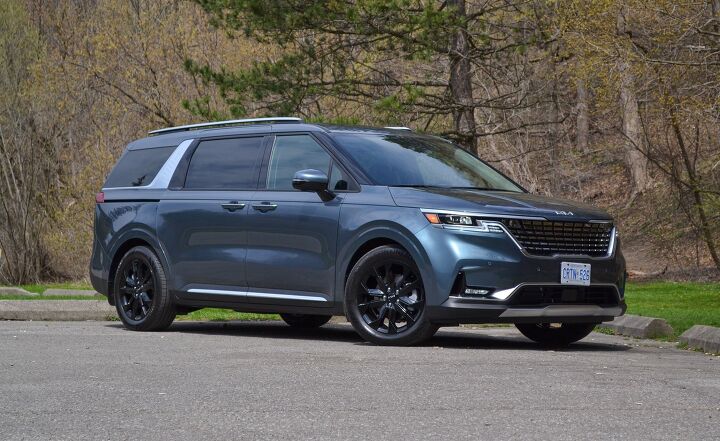



































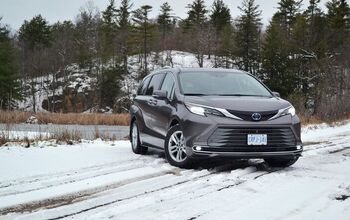
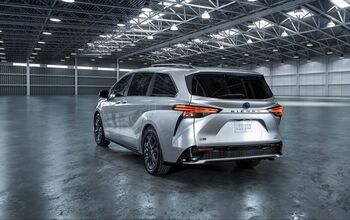
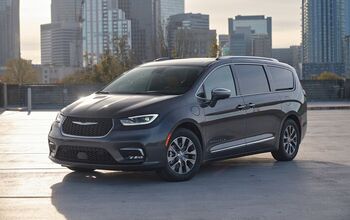
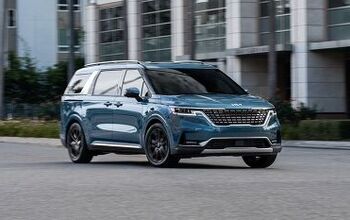
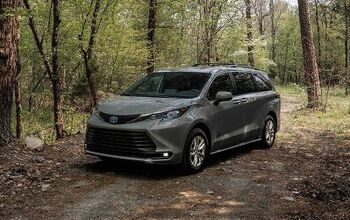











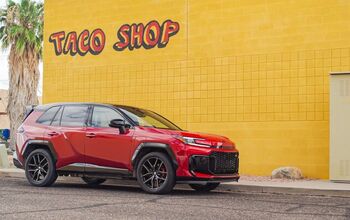
Comments
Join the conversation